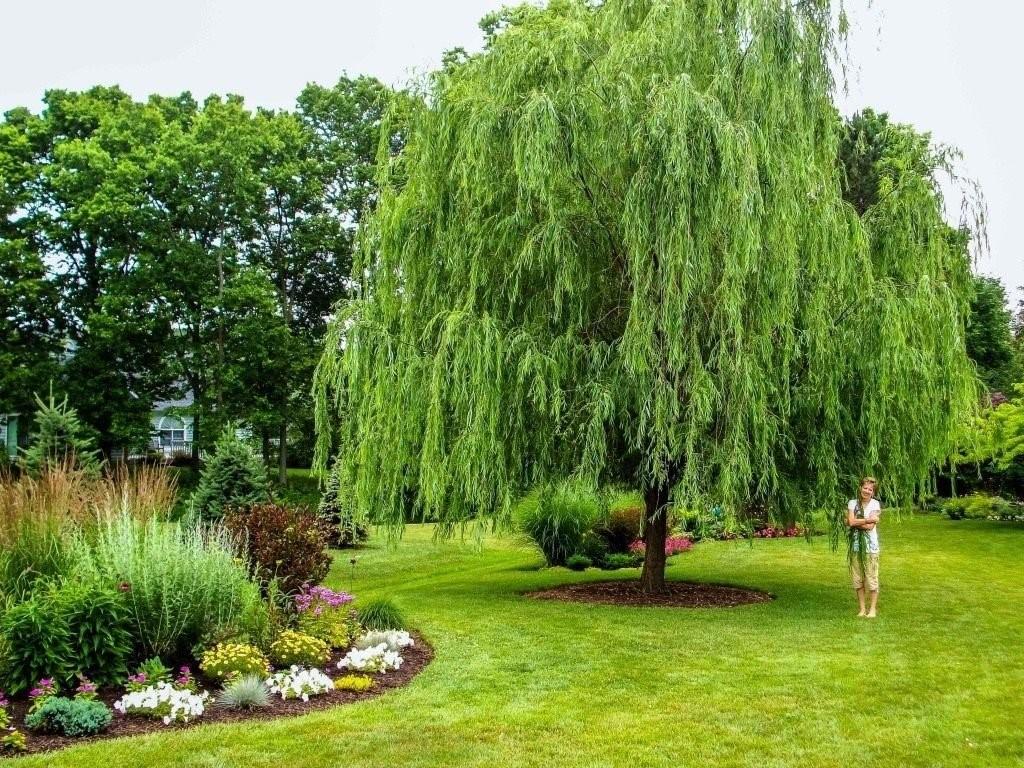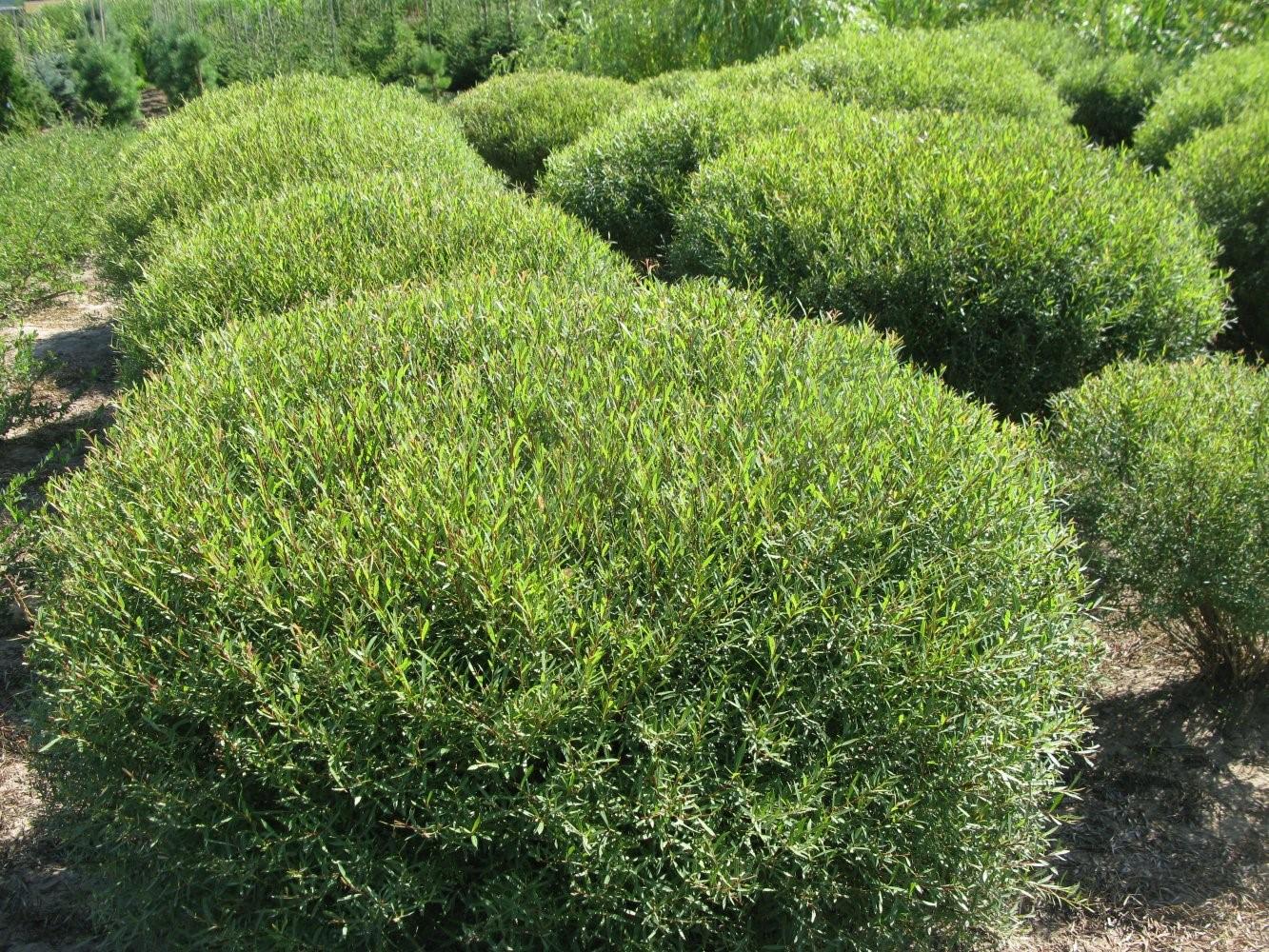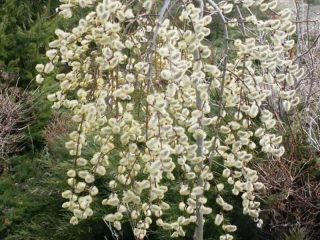Content
The willow tree is depicted as a symbol of sadness and beauty. Its long branches can be found near rivers, roads and forest paths. They can sink to the ground, and if there is excess liquid, they can form drops. Because of this, the plant was nicknamed weeping. To plant a willow tree correctly, you will need a minimum amount of knowledge.
Is it possible to plant willow in the yard?
Due to their small size, some areas are not suitable for planting willow. This largely depends on the variety the owner wants to use. Dwarf varieties coexist in many regions.
In Russia, the winter hardiness of the crop is important. Plants survive harsh winter in different ways. Among the most powerful varieties:
- Mesh. Dark green veins are clearly visible on the leaves. Willow has a spreading crown, shoots reach 40-60 cm in length.
Reticulated plantings prefer areas accessible to the sun.
- Tupolistna. It is a dwarf variety. The maximum height is limited to 40 cm. The leaves are elongated and have a glossy surface.
When planting willow, the drainage system is laid shallow
- Herbaceous.One of the smallest varieties, the name of which justifies the height of the willow. The ground-to-ground shrub reaches 15 cm. At the first stages, the shoots are yellow in color, and after a few years they become green.
Herbaceous willow grows well in the garden and vegetable garden
- Purple Nana. A medium-sized variety that grows up to 160 cm. It has bright earrings and scarlet shoots. Due to the decorative shape of the crown, it is suitable for creating landscape compositions.
- Ural. The distance from the top of the crown to the ground is 3.5-4 m. The branches have a golden hue, which eventually turns red. It is better to plant willow outdoors, next to a pond.
Plantings of the Ural species have very dense shoots
- Crying. The culture can be found in different regions and countries. The tree reaches 25 m, sometimes more, depending on conditions. Prefers moist soils and can grow in light shade.
Weeping willow is one of the most famous representatives of the Willow family in Russia and Europe
Conditions for growing willow
The culture is considered unpretentious: it can grow in all climatic zones with different levels of lighting and soil type. In their natural environment, willows are found in every corner of the planet. Growing conditions are minimal - the gardener needs to water the plant from time to time and apply fertilizer.
When to plant willow
The timing of willow planting depends on the root system. If it is closed, work can be carried out in any season except winter. In this case, the seedling is not separated from the earthen clod. When the roots are open, planting begins in early spring, before the buds open.
The favorable period is spring, since some varieties do not have time to take root in summer and autumn. To minimize the risk of frostbite, plantings are mulched and covered with non-woven material.
Willow planting
When planting, adhere to basic agrotechnical rules. The owner needs to choose a place, prepare the seedlings and dig a hole to size.
Where to plant willow on the site
Willow should be planted in areas with loamy or light soil. There must be good lighting, despite the fact that the crop can grow in partial shade.

In the wild, it is difficult to find willow in a dense forest; it usually grows at the edge
Selection of seedlings
To get a strong plant, choose seedlings that are more than a year old. Their surface should be woody. The material is harvested before leaves form. Regardless of the type of root system - closed or open - the selection requirements are identical.
There should be no stains, traces of fungal formations, wounds, bumps, or holes on the branches. They also look at the direction of escape. If the graft buds grow downward, the crown will later become weeping.
Planting scheme
Growing willow is easier than it seems. Just follow the simple instructions:
- Dig a hole. If the variety is dwarf, a diameter of 50 cm is enough. Large varieties are buried at a level of 40 cm, maintaining a diameter of 65 cm. In the case of a closed root system, the hole is formed according to the size of the coma.
- When planting in heavy soil, create a drainage system. A 20 cm layer of sand is poured onto the bottom of the pit. Fertilize the area with a nutritious substrate of peat and compost. You can use azofoska - 200 g for willow.
- The seedling is placed and buried.The earth needs to be trampled down so that a pit is formed around the trunk. If the plant is tall, place a peg.
Willow care
For rapid growth, willow requires two procedures - moisturizing and fertilizing. When grown for decorative purposes, in addition to sanitary pruning, formative pruning is carried out. Thanks to this, the crown of the tree will remain beautiful.
Watering and fertilizing
After planting in open ground, willow needs care, which consists of regular watering and fertilization. The culture is moisture-loving, so it needs help in the initial stages. The seedling is moistened once every seven days, using three to four buckets of water. The determining factor will be precipitation and the upcoming weather forecast.
In the first years of life, the soil is loosened and fed. When planting, the owner already applied organic fertilizer. Therefore, the next additive is used after a year. Fertilizing is applied twice a season.

At the end of summer, potassium-phosphorus complexes are used instead of nitrogen
Fallen vegetation is not kept near the trunk. The foliage contains substances that, when decomposed, negatively affect the willow root system.
Trimming
Beginners are afraid to cut branches because they are afraid that the plant will be hurt. However, this is how the owner controls growth, removes non-viable shoots, and gives the crown its shape. The optimal time for work is early spring and autumn. Frozen branches are removed in March.
In the first three years, plantings grow quickly; there is no need for formative pruning. Adult branches are shortened by 15 cm so that side shoots grow on them.This will make the willow lush and attractive and will not cause any harm to the plant.
Willow in winter
Planting a willow near a house or next to a pond is everyone’s choice. In any case, watering is reduced in the fall to prevent the crop from freezing.
Depending on the planting variety, they are covered with spruce branches or agrofibre. The above varieties require shelter for the winter except in Siberia. In the middle zone, the procedure is optional.
Pests and diseases
Willow can be attacked by diseases: scab, black and brown spot, powdery mildew. Fungal infections occur due to large accumulations of moisture, which are observed in heavy soils.

Long rains also contribute to infection
To protect plantings from diseases, folk and chemical preparations are used. For prevention purposes, it is recommended to treat willow with fungicides twice a season. If symptoms are detected, act immediately. The health of the crop will depend on the actions of the gardener.
To avoid disease, the willow is inspected daily. Even a quick glance helps to identify some signs - shoot necrosis, growths, color change. Infected branches are removed with a sharp instrument, which is disinfected in advance. The cut site is covered with garden varnish.
Willow can become a target for pests.Due to the attacks of caterpillars, the leaves of the plant suffer and it loses its decorative appearance. You should carefully inspect the tree or shrub for the presence of masonry. Butterflies are caught independently.
A big threat is posed by aphids, whose larvae wait out the cold season in the bark. The next year, harmful insects appear from them, feeding on the sap of the shoots. They form colonies and parasitize willow.

Broad-spectrum insecticides, for example, Aktara, will help protect the plant
What to plant next to willow
Designers advise placing plantings near bodies of water, where willow looks good alone.

Next to it you can plant moisture-loving crops - sedge, reeds, moss.

Willow will even decorate a decorative pond on the site
Willow is combined with flowers that prefer to grow in the shade; they are planted under the crown of a tree.

When growing shrub varieties, plantings are combined with each other; it is also recommended to use juniper and thuja
Conclusion
The correct place to plant a willow tree is near a river or lake. Its roots are not afraid of stagnant moisture. Experienced gardeners begin planting by laying out a drainage system. In the early stages, the crop needs foliar irrigation. An adult willow does not need to be watered - it itself receives the necessary moisture from the soil.

















